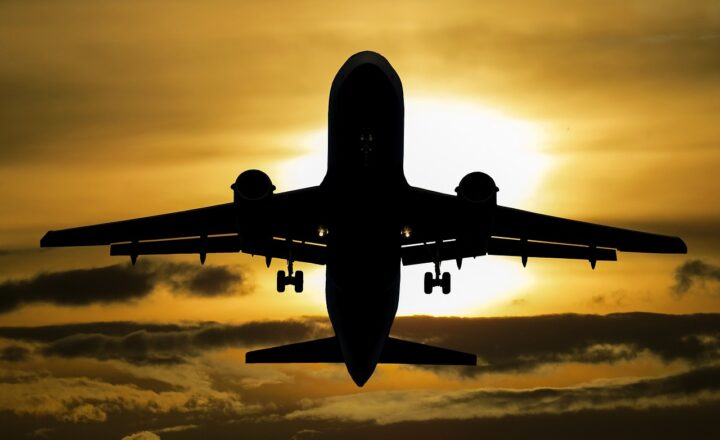Sky High Adventures: The Evolution of Air Travel and Its Impact on Modern Society
November 18, 2024

The invention of the airplane in the early 20th century marked the dawn of a new era in transportation. From its humble beginnings with the Wright brothers’ first flight in 1903 to the billion-dollar aviation industry we see today, air travel has dramatically transformed the way we connect, commute, and experience the world.
Air travel not only revolutionized how we travel but also had profound implications for global economics, social interactions, and perspectives on culture, making it a quintessential part of modern life.
The Birth of Aviation: Pioneers of the Sky
The history of air travel begins with visionary inventors. Before powered flight, humans had long dreamed of soaring through the skies, leading to numerous experimental designs and attempts at flight. The turning point arrived on December 17, 1903, when Orville and Wilbur Wright achieved the first controlled, sustained flight in a heavier-than-air motor vehicle at Kitty Hawk, North Carolina. This monumental achievement laid the groundwork for the modern aviation industry.
As technology advanced, so did the design and capability of aircraft. The introduction of commercial air services began shortly after World War I, with the first scheduled air mail service established in the United States in 1918. Passenger flights followed, marking the advent of a new travel experience for people around the globe.
The Golden Age of Air Travel: 1920s to 1950s
The period between the 1920s and 1950s is often referred to as the golden age of air travel. Airlines began to flourish, with iconic aircraft like the Douglas DC-3 and the Boeing 307 Stratoliner taking to the skies. These luxury aircraft provided passengers with unprecedented speed and comfort, revolutionizing travel.
Factors that contributed to this era included:
- Technological Advancements: The introduction of larger, faster, and more reliable aircraft allowed airlines to cover greater distances and serve a broader range of passengers.
- Government Support: Various governments supported aviation through infrastructure, regulations, and subsidies, aiding the industry’s development.
- Cultural Influence: Air travel became a symbol of progress and freedom, influencing pop culture and encouraging tourism on an unprecedented scale.
The luxurious experience of flying in this era is often romanticized in films and literature, showcasing glamorous backgrounds and service styles that modern air travel lacks.
Post-War Boom: The Rise of Commercial Aviation
After World War II, the aviation industry witnessed a remarkable expansion. With technological advances, including turbojet engines and wide-bodied aircraft, traveling by air became more accessible to the average person.
The introduction of the Boeing 747 in the late 1960s marked a significant milestone in commercial aviation, often referred to as the “Jumbo Jet”. Its capacity to carry hundreds of passengers at once transformed air travel, allowing airlines to lower ticket costs and increase the frequency of flights.
This era also saw:
- Global Connectivity: The proliferation of international airlines connected even the most remote parts of the world, fostering globalization and cultural exchange.
- Emergence of Budget Airlines: Low-cost carriers began to operate, making air travel available to millions who could not afford traditional airline prices.
- Airport Infrastructure: The expansion of airport facilities to cater to increasing passenger volumes and modern safety standards enhanced the overall travel experience.
The Modern Era: Innovations and Challenges
In the 21st century, air travel has continued to evolve with an emphasis on safety, sustainability, and customer experience. Innovations such as computer-assisted flight systems, advanced air traffic control, and 3D printing for aircraft components have made flying more efficient and secure.
However, the industry also faces multiple challenges:
- Environmental Concerns: The aviation sector is a significant contributor to carbon emissions. Efforts are underway to develop sustainable aviation fuels and electrified aircraft to mitigate environmental impact.
- Safety and Security: Heightened security measures following events such as 9/11 have led to longer delays and more stringent regulations impacting the passenger experience.
- Pandemic Effects: The COVID-19 pandemic drastically affected air travel as airlines grounded flights, leading to unprecedented challenges related to safety protocols, passenger confidence, and financial losses.
As the world recovers, the aviation industry is adapting to new norms, focusing on passenger safety, health protocols, and exploring innovative technology to enhance the travel experience.
Social and Economic Impacts of Air Travel
The impact of air travel extends beyond mere transportation, shaping economies and societies across the globe. Some key contributions include:
- Economic Growth: Air travel has become a cornerstone of global trade. It facilitates import and export businesses, supports tourism sectors in many countries, and generates millions of jobs worldwide within the aviation sector and its affiliated industries.
- Cultural Exchange: Enhanced connectivity fosters cultural exchange. People can travel for leisure, education, and work, leading to a better understanding of different cultures and lifestyles, promoting peace and mutual respect.
- Revolutionizing Business Operations: The ability to attend international meetings, conferences, and deals face-to-face in a matter of hours allows businesses to operate on a global scale and foster more effective collaborations.
The socio-economic fabric of societies has been woven with the strings of the aviation infrastructure, creating vibrant interconnected communities.
Looking Forward: The Future of Air Travel
As we look to the future, air travel is poised for exciting advancements. Initiatives such as electric and hybrid airplanes, supersonic travel, and advanced air mobility solutions (like airborne taxis) could redefine the next era of aviation.
Moreover, with ongoing discussions about more sustainable practices, the aviation industry is committing to future-proofing itself against the challenges of climate change and resource conservation.
The air travel experience will continue to evolve, becoming more integrated with technology through AI, biometrics, and personalized service offerings that cater to the modern traveler’s needs.
Conclusion
Air travel has indeed come a long way, from the first flight at Kitty Hawk to the complex global network that connects the world today. Its evolution reflects not just technological advancements but the aspirations of humanity to explore beyond horizons.
As we embrace the future, the impact of air travel will continue to shape societies, economies, and our understanding of the world. Airplanes may serve as vessels for physical transportation, but they also represent the human spirit’s journey, an endless pursuit of connection, discovery, and adventure.






